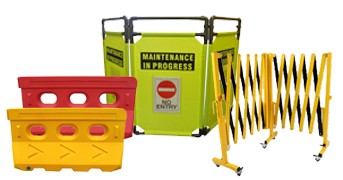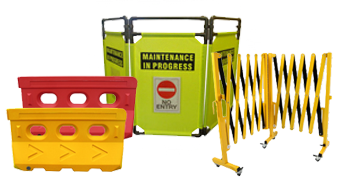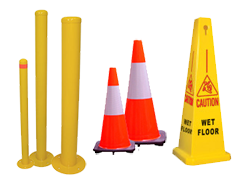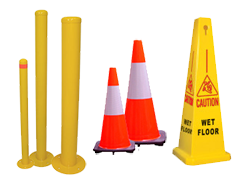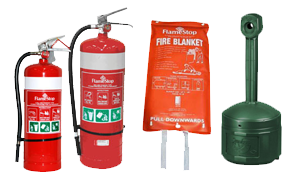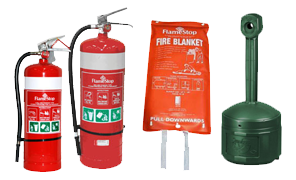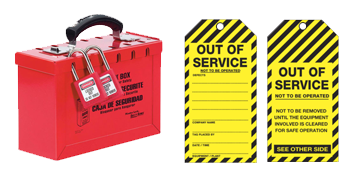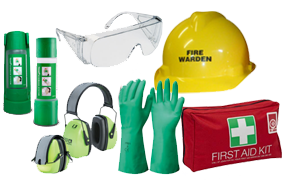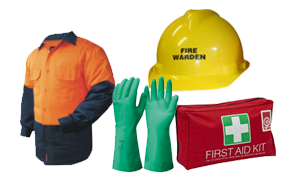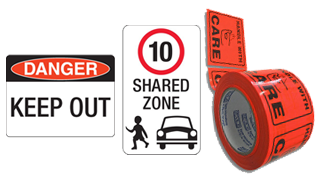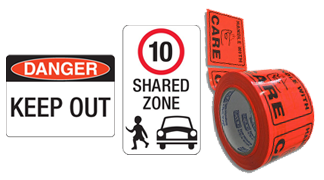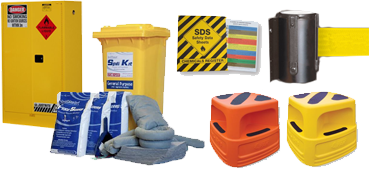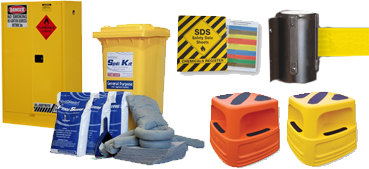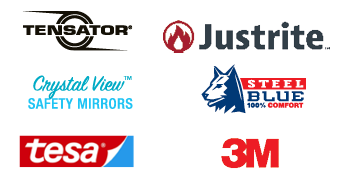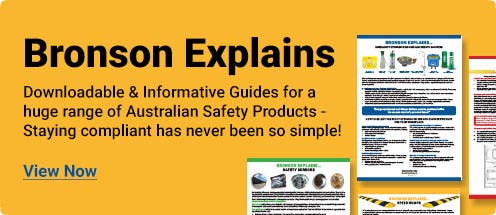The basics of GHS
The Globally Harmonised System of Classification and Labelling of Chemicals(GHS) originated in the United Nations. The original intention behind the GHS was to create a single worldwide methodology for chemical classification, labelling and safety data sheets. As the GHS is internationally recognised, it offers significant benefits to industry and can help to improve health and safety for those handling the trade of dangerous goods.
The GHS was introduced to Australia in January 2012 and, following a 5 year transition period, became mandatory January 2017. According to Safe Work Australia, The GHS system was adopted by Australia to improve communication and identification of hazards materials during international trade.
This means that any hazardous chemicals manufactured or imported after January 2017 are required to be GHS compliant. This includes compliance for primary and secondary labelling and packaging purposes, as well as safety data sheets (SDS).
Under the Model Work Health and Safety Laws, Australia adopted and continues to meet the standards set in the 3rd Revision of the GHS by UNECE (view here). Recent news has found that a proposal to adopt GHS Revision 7 (view here) under the model WHS laws from July 1st 2020 has been accepted. As with initial implementation, a 2 year transition period will be in place to allow a smooth transition to Revision 7 for manufacturers and importers. For more information on this transition, click here.
It's 2019, is GHS mandatory in Australia now?
Currently, GHS is compulsory in all Australian States with the exception of Victoria, Western Australia and Australian Capital Territory. This has a number of implications for interstate trade that may affect manufacturers and suppliers.
Additionally, not all hazardous chemicals used today in participating Australian States are required to meet the GHS criteria. Any hazardous goods that were already in the supply chain prior to January 2017 can continue to be used without needing to meet the criteria for GHS labelling. To determine which chemicals are included under the GHS laws, click here.
Which hazardous chemicals require GHS labelling compliance?
In short, any goods under the following three categories are required to be labelled by the GHS standards:
- Physical hazards,
- Health hazards or
- Environmental hazards
To find out specific information relating to these three classes of hazards as defined by the UNECE, click here.
The 6 basic aspects of GHS Labelling:
GHS compliant labels are required to include the following six key elements.
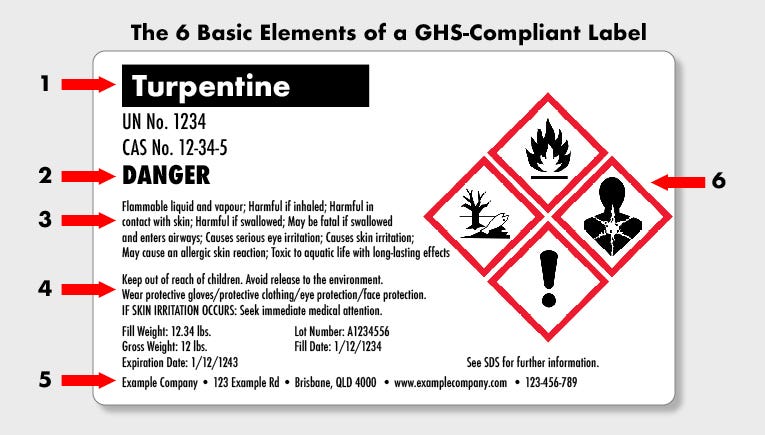

1. Product Identifier
This includes the product's name (e.g. Turpentine), UN Number and CAS Number. These identifiers must match what is recorded on the Safety Data Sheet to maintain clear records and improve information accessibility.
2. Signal Word
Two signal words are recognised under the GHS:
- DANGER - This indicates a severe level of danger and warns handlers to take great caution. Used for hazard categories 1 and 2.
- WARNING - This indicates a less severe level of danger and warns handlers to take some caution.
3. Hazard Statements
A hazard statement is a phrase that is assigned to an individual hazard class and category. This statement describes the nature of the hazards associated with that class and category, often in a single short sentence.
To determine the hazard class and category of a particular hazardous chemical, head to Safe Work Australia's Hazardous Chemical Information System. This link has a searchable system that contains a full database of most GHS recognised hazardous chemicals.
Turpentine is an example of a hazardous chemical that is contained under multiple hazard categories. As such, the Hazard Statement for Turpentine includes the individual hazard statements associated with each hazard category. A hazardous chemical that is contained under only one hazard category will have a shorter hazard statement than Turpentine.
4. Precautionary Statements
The Precautionary Statement describes the recommended measures that should be taken to minimise or prevent the hazards associated with the substance.
5. Supplier Identification
This includes the name, address and telephone number of the manufacturer or supplier of the hazardous chemical.
6. Pictorgrams
There are nine GHS pictograms that represent the physical, health or environmental hazards of an associated chemical. These symbols act to immediately and efficiently convey the specific hazard information visually using recognisable graphic symbols.
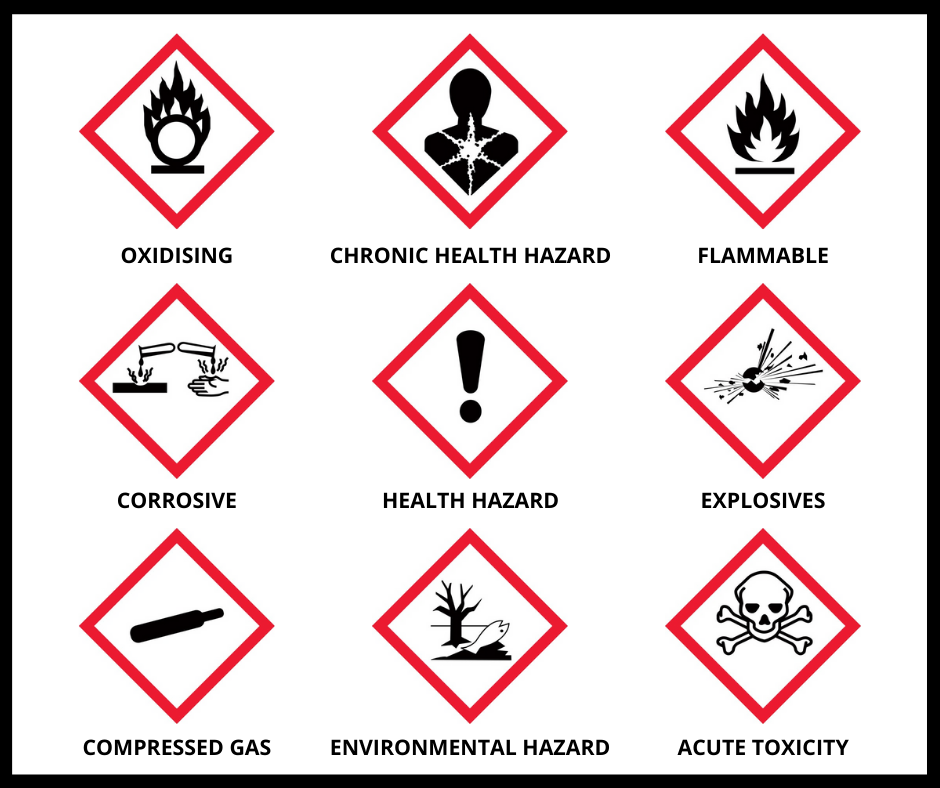

Don't forget: Secondary containers are also required to display GHS labelling
GHS labels must be presented clearly on the primary and secondary containers that store a hazardous chemical. To ensure compliance with the GHS, it is important to have a clear understanding of what constitutes a primary and secondary container.
Primary Containers
Primary containers are the outer packages that hold a hazardous chemical substance, as packaged by the manufacturer or supplier. Primary packages are required to be labelled with a GHS label that meets the above six label elements.
5 examples of a primary container:
- Drums,
- Cans,
- Cylinders,
- Boxes, and
- Bags.
Secondary Containers
Generally speaking, a secondary container is likely to be smaller than a primary container. Secondary containers usually hold hazardous chemicals that have been manually transferred from the primary container. As with a primary container, the secondary contain must also display a prominent GHS compliant label with each of the six above-outlined elements.
5 examples of a secondary container:
- Trays,
- Spray bottles,
- Beakers,
- Storage containers, and
- Jars.
How are Safety Data Sheets incorporated into GHS?
Safety Data Sheets (SDS) are also required to be provided by both manufacturers and suppliers for all chemicals classed as hazardous under GHS. An SDS acts to elaborate on the information provided on the GHS labels.
To meet strict GHS requirements, Safety Data Sheets must contain each of the following 16 sections:
- Section 1—Identification: product identifier and chemical identity
- Section 2—Hazard(s) identification
- Section 3—Composition and information on ingredients
- Section 4—First-aid measures
- Section 5—Firefighting measures
- Section 6—Accidental release measures
- Section 7—Handling and storage, including how the chemical may be safely used
- Section 8—Exposure controls and personal protection
- Section 9—Physical and chemical properties
- Section 10—Stability and reactivity
- Section 11—Toxicological information
- Section 12—Ecological information
- Section 13—Disposal considerations
- Section 14—Transport information
- Section 15—Regulatory information
- Section 16—Any other relevant information.
For more information on SDS's and compliance with GHS standards, visit Safe Work Australia.

